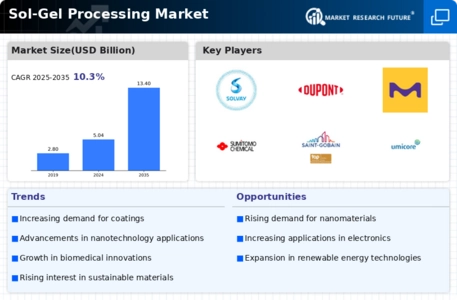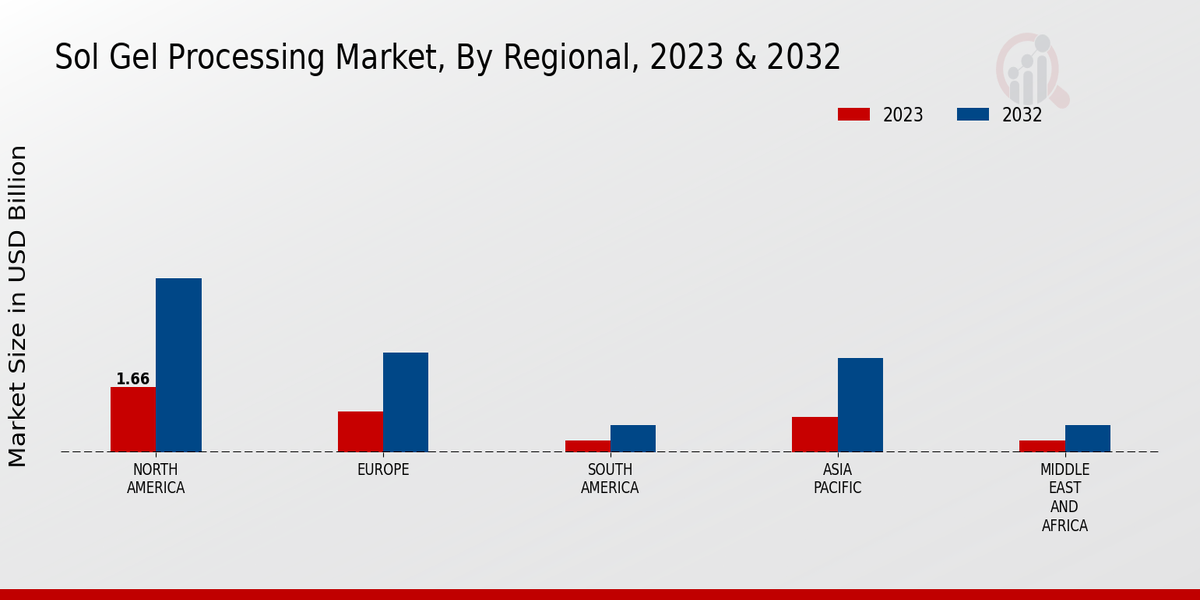Sol Gel Processing Market Summary
The Global Sol-Gel Processing Market is projected to grow significantly from 5.04 USD Billion in 2024 to 14.82 USD Billion by 2035.
Key Market Trends & Highlights
Sol-Gel Processing Key Trends and Highlights
- The market is expected to experience a compound annual growth rate (CAGR) of 9.31% from 2025 to 2035.
- By 2035, the market valuation is anticipated to reach 13.4 USD Billion, indicating robust growth potential.
- in 2024, the market is valued at 5.04 USD Billion, reflecting a strong foundation for future expansion.
- Growing adoption of advanced materials due to increasing demand for high-performance coatings is a major market driver.
Market Size & Forecast
| 2024 Market Size | 5.04 (USD Billion) |
| 2035 Market Size | 14.82 (USD Billion) |
| CAGR (2025-2035) | 10.29% |
Major Players
Evonik Industries AG, Cabot Corporation, Ferro Corporation, Asahi Glass Company, Solvay, DuPont de Nemours, Inc., Merck KGaA, JSR Corporation, Momentive Performance Materials Inc., Heraeus Holding GmbH, Sumitomo Chemical, 3M Company, BASF SE, Saint-Gobain, Umicore

















